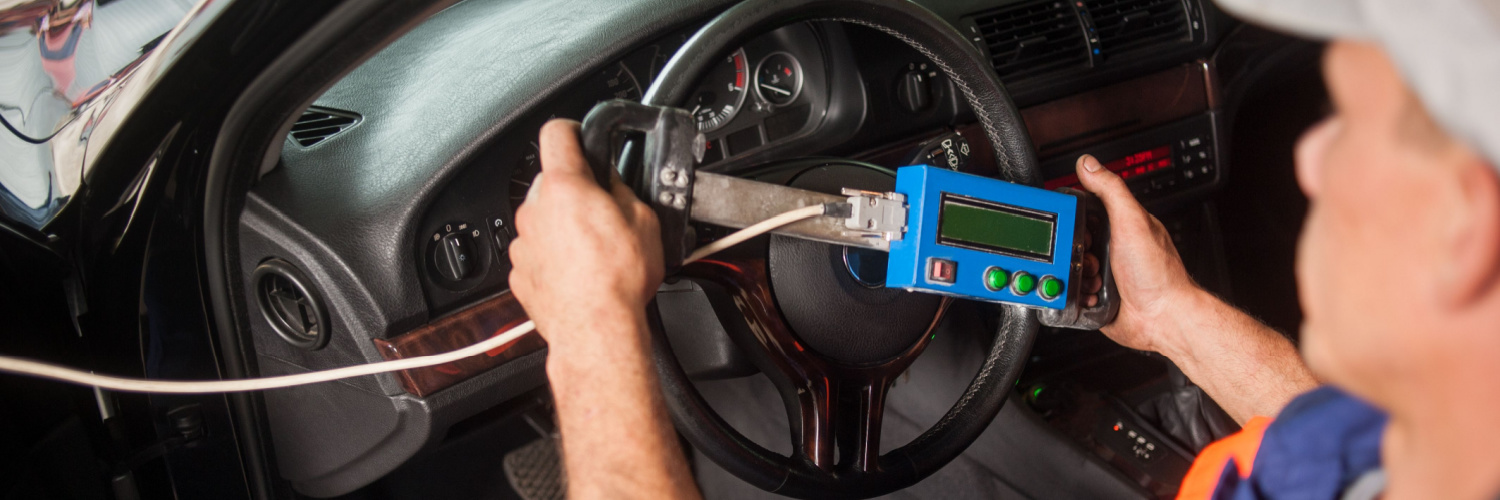Steering & Suspension in Erindale, ON

Your car’s suspension and steering are two separate systems that function together. The weight of your car is supported by the suspension system, which gives you a smooth ride and steady road control when driving. On the other hand, the steering system offers directional control, enabling you to steer and control your vehicle.
Balance, stability, and a smooth ride are all made possible by your steering and suspension systems. You and your passengers will have a comfortable journey due to these systems.
How the Suspension and Steering Systems Function
Here’s an overview of how these systems function:
Suspension System:
The suspension system supports the vehicle’s weight, maintains tire contact with the road, and absorbs shocks and vibrations. It consists of several components, including:
Springs: Springs, such as coil or leaf springs, support the vehicle’s weight and help absorb road impacts.
Shock Absorbers/Struts: Shock absorbers or struts prevent excessive bouncing and maintain tire contact with the road.
Control Arms: Control arms connect the suspension components to the vehicle’s frame or body.
Anti-roll Bars: Anti-roll bars, also known as stabilizer bars, reduce body roll during cornering.
The suspension system compresses and rebounds the springs in response to road irregularities. This helps to absorb shocks, provide stability, and maintain traction, ensuring a comfortable and controlled ride.
Steering System:
The steering system allows the driver to control the direction of the vehicle. It includes various components, such as:
Steering Wheel: The steering wheel is the control interface that the driver uses to turn the vehicle.
Steering Column: The steering column transmits the driver’s input from the steering wheel to the steering gearbox or rack and pinion.
Steering Gearbox/Rack and Pinion: These components convert the rotational motion from the steering wheel into the lateral movement to steer the wheels.
Tie Rods: Tie rods connect the steering gearbox or rack and pinion to the steering knuckles, transmitting the steering force and allowing the wheels to turn.
Power Steering System: Many vehicles feature power steering, which uses hydraulic or electric assistance to make steering easier and more responsive.
When the driver turns the steering wheel, the steering system translates that input into the necessary movement to steer the front wheels. This allows the vehicle to change direction smoothly and efficiently.
What Are Indications of Steering Issues in Your Vehicle?
Steering issues in a vehicle can manifest in various ways, and it’s important to be aware of the indications that something may be wrong with the steering system. Here are some common signs of steering issues to look out for:
Difficulty Steering: If you find it harder to turn the steering wheel or experience resistance when maneuvering the vehicle, it could indicate a problem with the power steering system or a potential issue with the steering components.
Steering Wheel Vibrations: Excessive vibrations in the steering wheel, especially at higher speeds, may indicate misalignment or imbalanced tires. It could also be a sign of worn-out steering components or suspension problems.
Uneven Tire Wear: Uneven wear patterns on the tires, where one side of the tire tread is more worn than the other, can indicate alignment issues or problems with the suspension and steering components.
Drifting or Pulling: If your vehicle tends to drift or pull to one side while driving on a straight road, it may indicate alignment problems or uneven tire pressure. It could also point to issues with the suspension or steering components.
It’s important to address steering issues promptly to maintain safe driving conditions and prevent further damage to the steering system or other components.
What Are Indications of Suspension Issues in Your Vehicle?
Suspension issues in a vehicle can affect the ride’s overall stability, handling, and comfort. Here are some common indications that your vehicle may be experiencing suspension problems:
Rough or Bumpy Ride: If your vehicle’s ride has become significantly rougher or bumpier than usual, it could indicate worn-out or damaged suspension components. A properly functioning suspension should help absorb shocks and provide a smooth ride.
Excessive Bouncing: When driving over bumps or uneven road surfaces, if your vehicle continues to bounce excessively or takes a long time to stabilize after encountering an obstacle, it may indicate worn-out or ineffective shock absorbers or struts.
Excessive Body Roll: When taking corners or making turns, if you notice that your vehicle leans excessively to one side, it could indicate worn-out or damaged sway bar links, bushings, or other suspension components. Proper suspension should help maintain stability during cornering.
Abnormal Noise: Unusual noises coming from the suspension, such as clunking, knocking, or squeaking sounds, especially when going over bumps or rough roads, may indicate worn-out or loose suspension components that require attention.
Fluid Leaks: If you observe any fluid leaks, particularly around the suspension components or shock absorbers, it could indicate a problem with the suspension system, such as a leaking shock absorber or hydraulic fluid.
Choose Halton Transmission for Steering and Suspension Services in Erindale, ON
Choose Halton Automotive Service & Transmission for all your steering and suspension needs in Erindale, ON. With our expertise, quality service, and dedication to customer satisfaction, you can trust us to keep your vehicle’s steering and suspension systems in optimal condition. Contact us today to schedule an appointment or to learn more about our services.

